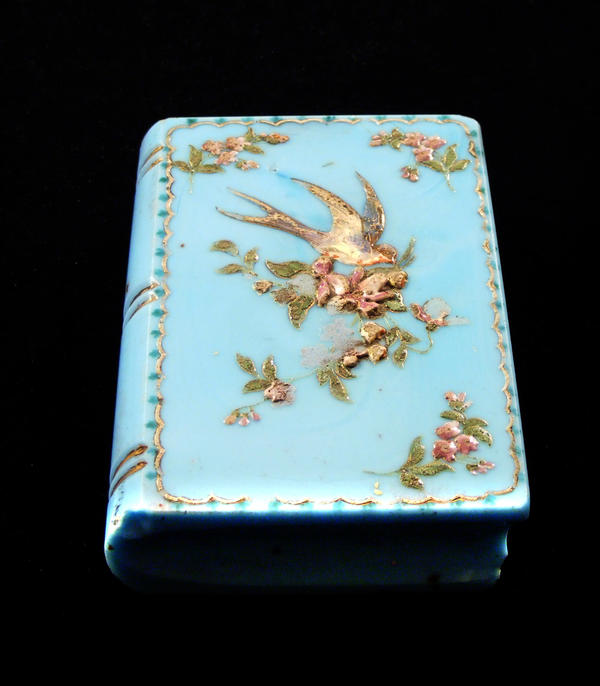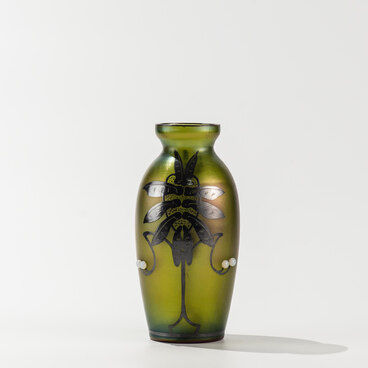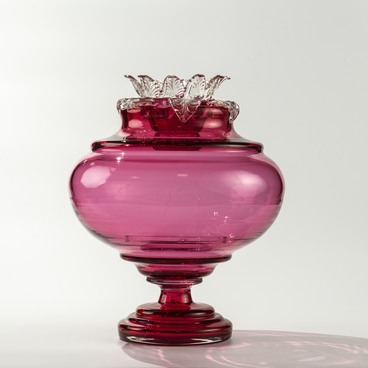The Russian term for a “paperweight” originated from the French word “presse-papiers” where “рresser” means “to press”, and “papier” means “paper”. Paperweights are made of bronze, marble, crystal, and glass. A glass paperweight is first mentioned in the notes of Sabellicus, a 15th-century historian from Venice. He described a glass paperweight filled with tiny wildflowers. The flower pattern was made using the millefiori technique which translates from Italian as “a thousand flowers”. It is one of the oldest and most time-consuming methods used in glass production. Particularly interesting are the Russian paperweights produced using the free blowing technique in Dyatkovo in the late 19th century. The Maltsov craftsmen were talented at copying various techniques. The Dyatkovo Factory produced paperweights in the 19th century, in the period until the beginning of the Great Patriotic War, and even in the 1950s. The elaborate paperweights have been preserved to this day and are presented in the exhibition. The visitors can discover the variety of their shapes, as well as the colorful and unique decoration.
The production of paperweights is recorded in the preserved 1884 and 1900 price lists of the Maltsov Factory Stock Company which include products that were manufactured by the factory during the corresponding period. Considering the complexity of the production process, paperweights can be considered masterpieces of glass art that fascinate with their sophistication, mysterious beauty, and uniqueness. Quite often, such items are used as decoration instead of fulfilling their original purpose. For example, a paperweight may be used to decorate a table.
The paperweight presented in the exhibition was made of light-blue glass mass. The book shape was created using the free blowing technique where the glass is processed immediately at the glass melting furnace. The Russian term for this technique “gutnaya” most likely originated from the Latin word “gutta” meaning “a drop”. In this case, it is a drop of hot glass mass.
The light-blue color of the item is achieved by adding copper compounds to the raw materials for producing glass. The top part of the paperweight was decorated with gold painting. Sadly, as time passed, the decoration was partially lost. The item was donated to the Crystal Museum by a woman from Dyatkovo.
The production of paperweights is recorded in the preserved 1884 and 1900 price lists of the Maltsov Factory Stock Company which include products that were manufactured by the factory during the corresponding period. Considering the complexity of the production process, paperweights can be considered masterpieces of glass art that fascinate with their sophistication, mysterious beauty, and uniqueness. Quite often, such items are used as decoration instead of fulfilling their original purpose. For example, a paperweight may be used to decorate a table.
The paperweight presented in the exhibition was made of light-blue glass mass. The book shape was created using the free blowing technique where the glass is processed immediately at the glass melting furnace. The Russian term for this technique “gutnaya” most likely originated from the Latin word “gutta” meaning “a drop”. In this case, it is a drop of hot glass mass.
The light-blue color of the item is achieved by adding copper compounds to the raw materials for producing glass. The top part of the paperweight was decorated with gold painting. Sadly, as time passed, the decoration was partially lost. The item was donated to the Crystal Museum by a woman from Dyatkovo.



